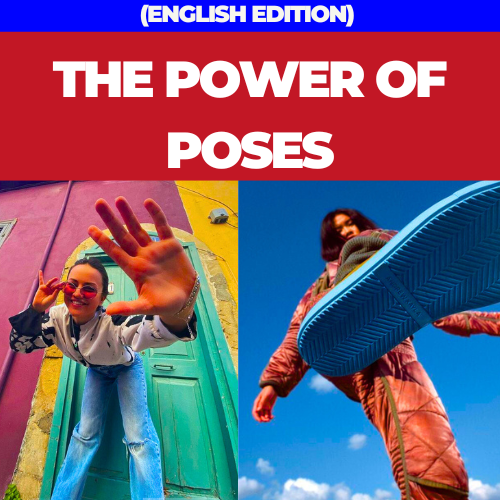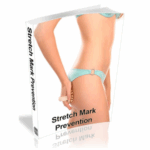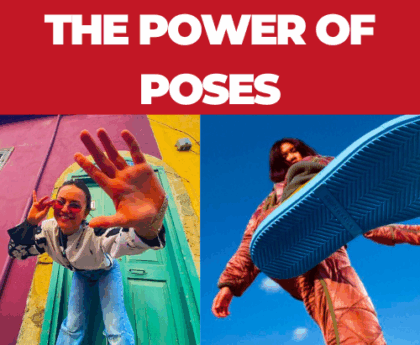How to Learn Posing for Photography: The Ultimate Guide
Learn how to learn posing for photography with this ultimate guide. Discover essential posing techniques, practice exercises, and expert tips for stunning photos.
Whether you’re an aspiring model, a professional photographer, or simply someone who wants to look their best in photos, learning how to pose effectively is essential. Posing can make the difference between an awkward snapshot and a captivating image that tells a story.
In this comprehensive guide, we will break down how to learn posing for photography, offer practical tips, exercises, and recommended resources, so you can master this skill and feel confident in front of or behind the camera.
Table of Contents
- Why Posing Matters in Photography
- Understanding the Basics of Good Posing
- Common Mistakes to Avoid When Posing
- How to Learn Posing for Photography Step by Step
- Essential Posing Techniques for Different Body Types
- How to Pose Different Parts of the Body
- Practicing Posing: Tips and Exercises
- Posing for Different Photography Styles
- Resources for Learning Posing
- Final Thoughts
Get to Know 👈👇
https://sutor.store/product/learn-poses-photography-english-edition/

1. Why Posing Matters in Photography
Before diving into how to learn posing for photography, it’s important to understand why posing is such a critical skill.
1.1. Enhances Storytelling
Every photograph tells a story, and the subject’s pose can dramatically affect how that story is conveyed. A well-executed pose expresses emotion, context, and personality.
1.2. Creates Visual Interest
Posing introduces lines, shapes, and dynamics that make a photo visually compelling. It helps avoid flat or static compositions.
1.3. Builds Confidence
Knowing how to pose eliminates the awkwardness many feel in front of the camera. Confidence translates into better photos.
1.4. Shows Professionalism
For photographers, understanding posing demonstrates skill and professionalism. For models, it expands their versatility and employability.
2. Understanding the Basics of Good Posing
To learn posing effectively, you must first understand its foundational principles.
2.1. Posture is Key
Good posture is the backbone of any pose. Straighten the spine, relax the shoulders, and elongate the neck. This creates a flattering silhouette and exudes confidence.
2.2. The Importance of Angles
Angles play a significant role in posing. Turning the body slightly away from the camera, tilting the head, or shifting weight to one hip can make poses more dynamic and natural.
2.3. Relaxed Hands and Face
Tension in the hands or face can ruin an otherwise great pose. Learn to relax your muscles, adopt natural hand positions, and maintain soft facial expressions.
2.4. Understanding Symmetry and Asymmetry
Symmetrical poses can convey strength and formality, while asymmetrical poses often look more relaxed and candid. Both are valuable depending on the mood and style of the shoot.
3. Common Mistakes to Avoid When Posing
Knowing what not to do is as important as knowing what to do.
3.1. Stiffness
Overthinking can result in stiff and unnatural poses. Focus on fluidity and movement instead of trying to “hold” a pose.
3.2. Ignoring Body Language
Your body communicates even when you’re silent. Make sure your pose matches the emotion or concept of the shoot.
3.3. Unflattering Angles
Certain angles can make features appear disproportionate. Always experiment with different perspectives to find the most flattering look.
3.4. Neglecting the Hands
Hands can make or break a pose. Avoid leaving them hanging limply; instead, use them to accentuate movement or frame the body.
4. How to Learn Posing for Photography Step by Step
Now that you understand the importance and basics of posing, here’s a step-by-step guide to mastering this art.
4.1. Study Posing Inspiration
Start by observing professional models, photographers, and influencers. Analyze their poses in fashion magazines, social media, and photography books.
- Look at how they position their body.
- Notice the direction of their gaze.
- Pay attention to how they use their hands and feet.
4.2. Learn Posing Terminology
Familiarize yourself with basic posing terms such as:
- Contrapposto: A natural stance where the subject shifts weight onto one leg.
- S-Curve: A gentle curve created by the body to create elegance.
- Negative Space: The areas around and between the subject that contribute to composition.
4.3. Practice in Front of a Mirror
Practicing in front of a mirror helps you develop muscle memory for different poses. Try various angles and facial expressions, and take note of what feels natural.
4.4. Record Yourself
Use your phone to record videos or take selfies from multiple angles. This allows you to critique your poses and make necessary adjustments.
4.5. Seek Feedback
Share your photos or videos with friends, mentors, or online communities. Constructive criticism helps you refine your skills.
4.6. Work with a Photographer
Collaborating with a photographer provides professional insight into posing. They can guide you on how to adjust your posture, angle, or expression for the best shot.
5. Essential Posing Techniques for Different Body Types
When learning how to pose for photography, it’s crucial to understand that not all poses suit every body type.
5.1. Posing for Petite Individuals
- Elongate your body by pointing your toes.
- Use vertical lines to create the illusion of height.
- Avoid poses that compress your body.
5.2. Posing for Curvy Bodies
- Emphasize your natural curves with S-curve poses.
- Place hands on the waist to define your shape.
- Avoid slouching, as it can make you appear shorter and wider.
5.3. Posing for Athletic Builds
- Highlight muscle tone with strong, angular poses.
- Use power stances to convey confidence.
- Experiment with side profiles to showcase definition.
6. How to Pose Different Parts of the Body
Posing is not just about the whole body; attention to individual parts is crucial.
6.1. Posing the Head and Face
- Tilt your head slightly for a more flattering jawline.
- Use soft expressions for approachable looks and strong expressions for editorial vibes.
- Maintain eye contact with the camera for engagement or look away for candidness.
6.2. Posing the Hands
- Avoid clenching fists.
- Rest hands gently on hips, hair, or face.
- Use hands to interact with props for more dynamic shots.
6.3. Posing the Legs and Feet
- Cross legs at the ankles when sitting for a poised look.
- When standing, shift weight onto one leg to avoid stiffness.
- Use your toes to point or elongate lines in the body.
7. Practicing Posing: Tips and Exercises
Like any skill, posing improves with practice. Here’s how to train effectively.
7.1. Daily Posing Drills
Spend 10-15 minutes daily practicing different poses. Focus on:
- Transitions between poses.
- Maintaining relaxed facial expressions.
- Holding poses for extended periods.
7.2. Experiment with Props
Using props can make posing easier and add interest to photos. Try posing with:
- Chairs
- Hats
- Scarves
- Mirrors
7.3. Practice Different Emotions
Being able to express various emotions through your poses is key. Practice:
- Joy
- Confidence
- Vulnerability
- Mystery
7.4. Observe Natural Posing
Notice how you and others stand, sit, or gesture in daily life. These organic positions often translate well into natural, relaxed poses.
8. Posing for Different Photography Styles
Different genres of photography call for different posing approaches.
8.1. Posing for Portrait Photography
- Keep the pose simple to emphasize facial expression.
- Use slight head tilts and relaxed shoulders.
- Engage the eyes to create connection.
8.2. Posing for Fashion Photography
- Use dramatic angles and elongated lines.
- Experiment with unconventional poses.
- Work with the clothing to showcase textures and designs.
8.3. Posing for Lifestyle Photography
- Focus on candid, movement-based poses.
- Interact naturally with the environment.
- Smile and laugh genuinely for authenticity.
8.4. Posing for Boudoir Photography
- Use soft, sensual poses.
- Pay attention to hand placement and curves.
- Maintain a comfortable and relaxed atmosphere.
8.5. Posing for Group Photos
- Avoid standing in a straight line.
- Use levels and layering to create depth.
- Ensure everyone’s body language complements the group dynamic.
9. Resources for Learning Posing
If you’re serious about mastering how to learn posing for photography, these resources can help.
9.1. Books
- The Photographer’s Guide to Posing by Lindsay Adler
- Posing Techniques for Photographing Model Portfolios by Billy Pegram
9.2. Online Courses
- MasterClass: Fashion Photography with Annie Leibovitz
- CreativeLive: Posing and Lighting
9.3. YouTube Channels
- Jessica Kobeissi
- Mango Street
- Peter McKinnon
9.4. Instagram and Pinterest
Follow models and photographers to stay updated on current posing trends and gather inspiration.
9.5. Posing Apps
- Pose Camera
- Easy Pose
- Model Poses
These apps provide pose references and 3D models to help you visualize poses.
10. Final Thoughts
Learning how to pose for photography is an ongoing journey that requires observation, practice, and creativity. Whether you are working in front of the lens or directing subjects from behind it, understanding the principles of posing will elevate the quality and storytelling potential of your images.
Key Takeaways:
✅ Study professional poses for inspiration.
✅ Practice regularly to build muscle memory.
✅ Focus on posture, angles, and natural expressions.
✅ Adapt poses to suit different body types and genres.
✅ Seek feedback to refine your technique.
By following the steps and tips in this guide, you’ll not only learn how to pose effectively but also develop an intuitive understanding of what works best in different photographic contexts.
Are you ready to transform your photography skills through mastering posing? Share your progress or ask questions in the comments below!
FAQs About How to Learn Posing for Photography
Q: How long does it take to learn posing for photography?
A: With consistent practice, you can see significant improvement within a few weeks. Mastery can take months or years depending on your goals.
Q: Do I need to be a model to learn posing?
A: Not at all! Posing skills are valuable for anyone who wants to look good in photos or direct others effectively.
Q: What is the best way to practice posing alone?
A: Use a mirror or set up a camera to take self-portraits. Reviewing your photos helps identify areas for improvement.
Ready to elevate your posing game?
Bookmark this guide and return whenever you need a refresher. And don’t forget: the best pose is one that makes you feel confident and authentic.
Meta Description: Learn how to learn posing for photography with this ultimate guide. Discover essential posing techniques, practice exercises, and expert tips for stunning photos.




